Tactical Innovation Enables Continuous Combat Service
Officials with the 2nd Cavalry Regiment have found a unique solution to a software challenge while fielding the Warfighter Information Network-Tactical Increment 2. The validation of the process could pave the way for other units to implement the fix if they encounter a similar issue.
Mission command is the critical component in ensuring success under a large-scale combat operation. As the senior sustainment commander and sustainment coordinator within the Army’s only forward-stationed Stryker Brigade, the 2nd Cavalry Regiment, unfettered access to all elements within the regiment is required.
As defined in the Army Doctrine Publication 6-0, mission command is “the Army’s approach to command and control that empowers subordinate decision-making and emphasizes decentralized execution appropriate to the situation.” This is extremely challenging when an area of operations spans across the European and African continents. S6 signal professionals have done a superior job ensuring that mission command for the 1,170 soldiers supporting the 2nd Cavalry Regiment across five countries in a multinational exercise is properly executed.
The S6 team developed a highly innovative approach that overcame a technical issue resulting from a newly fielded system. Innovation at the tactical level has had strategic impacts and has strengthened the forward-stationed signal enterprise within Europe.
As of March 2019, the 2nd Cavalry Regiment began its fielding of the Warfighter Information Network-Tactical (WIN-T) Increment 2, which included a Lot 9 Satellite Transportable Terminal (STT) and Tactical Command Node. This new equipment replaced the WIN-T Increment 1 system that included a Command Post Node and Lot 10 STT. The newly issued systems would expand the 2nd Cavalry Regiment’s upper tactical Internet capabilities by allowing the network to be established while displacing. This capability is linked directly to increased survivability on the battlefield.
After several months of use, Sgt. Anton Mills, USA, senior transmission system operator-maintainer, and Spc. Ryan Frederick, USA, transmission systems operator maintainer, noticed that the primary software that maneuvered the STT’s dish started to malfunction and failed to geographically locate the system.
To ensure operational success, the team worked with external agencies to address the issue. Leveraging an authorized third-party software to move the dish in the appropriate direction to find the satellite allowed the establishment of upper tactical Internet connectivity.
After multiple uses of the third-party software, the temporary fix started to fail. Sgt. Mills realized that a highly technical expert was requred in the 2nd Cavalry Regiment network operations to repair the primary software and allow the dish to track and locate the satellite. As the regimental team troubleshot the issue, it identified another fault with the outdoor unit sensor and encoder assembly, which translates the dish’s azimuth and elevation movement to third-party software. The dish was no longer communicating with the primary and third-party software and was deemed not mission capable.
CW2 Ethan Equall, USA, the officer in charge of network operations, contacted Dan Hart, the logistic assistance representative, to assess and repair the STT. After Sgt. Mills worked on the STT for several days with Hart, he stated that the STT could not be repaired in Germany. This required the team to send its primary mission command system to the United States for an undetermined amount of time.
This was not a desired course of action, as the 2nd Cavalry Regiment was preparing to execute an aggressive training cyclic. Hart requested additional assistance from DataPath, the CONUS-based vendor for the software. The Regimental Support Squadron S6 team and Hart brainstormed the idea of collaborating an Increment 1 STT with the current WIN-T Increment 2 systems, thus beginning a binding of old and new STT. This was truly an innovative idea, as no one in Europe had even attempted to build a hybrid STT.
Sgt. Mills immediately made an appointment with the logistic assistance representative and had the older Lot 10 STT, which was staged for turn-in, brought out of the motor pool and moved to the representative’s facility for its modification work order. The modification entailed the first-ever installation of a frequency division multiple access modem into an Increment 1 STT.
To implement the modem, Sgt. Mills started the complex process of fusing two switches that were developed by two different companies, Cisco and Brocade. Switches play a key role in the overall operations of the STT, as they allow multiple pieces of hardware to communicate throughout the STT. Programming languages will enable the user to configure the switch by using commands to manage settings. The challenge was that the two switches used different programming languages. For the Cisco and Brocade switches to pass data from the frequency division multiple access modem to each other, it needed a virtual local area network created to bridge the switches.
Once Sgt. Mills and Spc. Frederick created the virtual local area network, the frequency division multiple access modem in the STT could communicate and pass data through the integrated switches, allowing it to communicate with Increment 2 systems and successfully establishing upper tactical Internet. This was the first known successful hybrid, merging Increment 1 and Increment 2 systems within the European Theater. The Regimental Support Squadron was leading the way.
Sgt. Mills and Spc. Frederick validated the hybrid, the successful integration of the Lot 10 STT and the tactical command node to ensure voice and data on the nonsecure Internet protocol router network (NIPRnet), the secret Internet protocol router network (SIPRnet), and Java Management Extensions enclaves were working properly in preparation for combat training center rotation, Dragoon Ready 2021.
Because of Sgt. Mills and Spc. Frederick’s intervention, the Regimental Support Squadron could establish NIPRnet, SIPRnet and coalition Java Management Extensions voice and data networking, enabling warfighters to communicate via upper tactical Internet to the regiment. The validation of the process allows other units in the 2nd Cavalry Regiment, U.S. Army Europe and Africa, and the U.S. Army to implement if they encounter a similar issue. This will afford commanders at all levels the ability to integrate an Increment 1 STT and an Increment 2 system if their Increment 2 STT presents a similar fail/malfunction.
Furthermore, this tactical innovation, along with the persevering attitude demonstrated by two signal professionals, enabled the Regimental Support Squadron to provide highly survivable and continuous combat service support to the Army’s only forward-stationed Stryker Brigade.
Lt. Col. Christopher M. Richardson, USA, is currently the commander of the Regimental Support Squadron, 2nd Cavalry Regiment. He is a graduate of Command and General Staff College, Joint Professional Military
Education II, and Advanced Navigation Operations.
Command Sgt. Maj. (CSM) Willie Allen, USA, is currently CSM for Regimental Support Squadron, 2nd Cavalry Regiment. He is a graduate of the Sergeant Major Academy Class 1968.
Capt. Dallas R. Villarreal, USA, is currently the S6 officer in charge for Regimental Support Squadron, 2nd Cavalry Regiment. She is a graduate of the Signal Basic Officer Leaders Course.
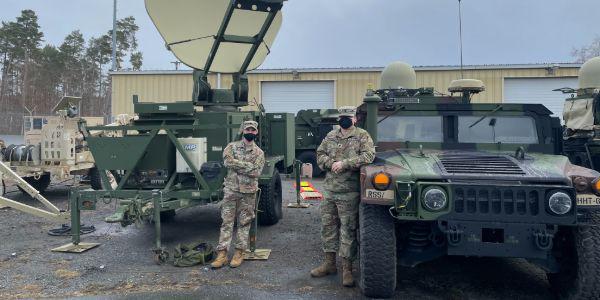
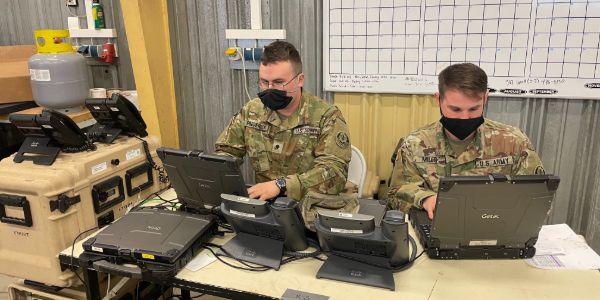
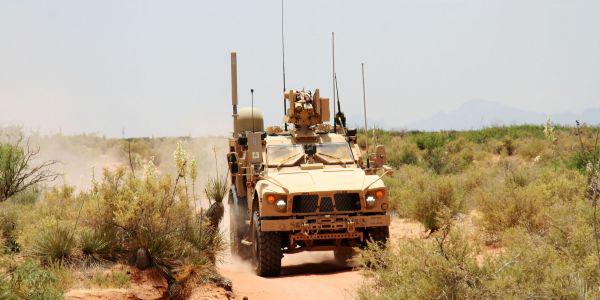

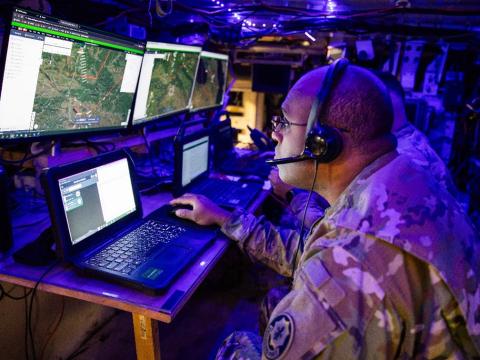

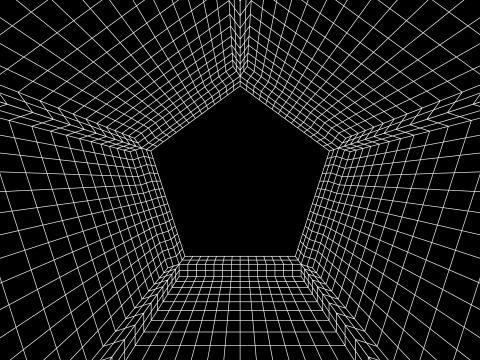
Comments